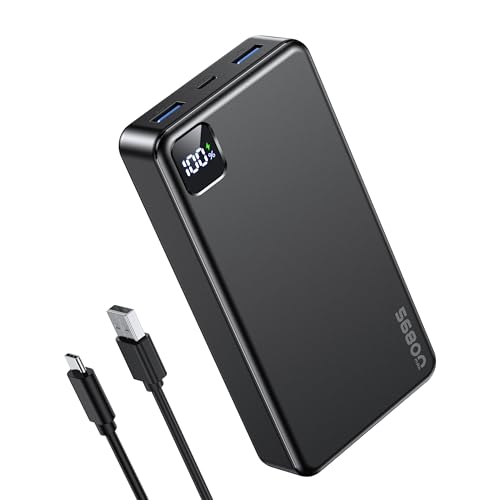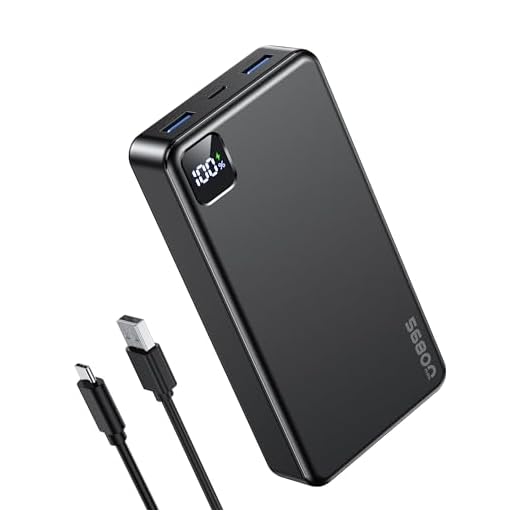


With the advancement of technology, digital cameras have become an essential tool for capturing precious moments. One question that often arises is whether a digital camera can operate solely from the USB connection.
While many digital cameras can be charged and data transferred via USB, the ability to operate solely from the USB connection varies depending on the camera model and specifications.
Some digital cameras can indeed function while connected to a USB power source, allowing for continuous operation without the need for batteries. However, this feature is not common in all cameras and may require specific capabilities.
Can a digital camera operate without a battery?
Many digital cameras rely on batteries to power their operations, but some models can also operate using a USB connection alone. This allows users to power the camera using a computer or a USB power adapter, eliminating the need for traditional batteries.
However, it’s important to note that not all digital cameras support USB-only operation. Some cameras may require a battery to be inserted, even when connected to a USB power source. It’s always best to consult the camera’s user manual or manufacturer specifications to determine if USB-only operation is supported.
Using USB as Power Source
Many digital cameras can be powered using a USB connection. This is particularly convenient when you are traveling and don’t have access to a traditional power outlet. Here are some key points to consider when using USB as a power source for your camera:
Compatibility
Not all digital cameras support USB charging. Make sure to check your camera’s specifications to see if it is capable of being powered through a USB connection.
Power Output
USB ports have different power output levels. Some may not provide enough power to charge your camera while others may be sufficient. It’s important to use a USB port that can deliver the necessary power for your camera.
| Pros | Cons |
|---|---|
| Convenient for travel | Some USB ports may not provide enough power |
| Can charge camera on the go | Charging may be slower compared to traditional power outlets |
Advantages of USB power
There are several advantages to powering a device such as a digital camera via USB:
- Convenience: USB power allows for easy charging and operation of devices without the need for additional power adapters.
- Portability: Since USB ports are common on computers, power banks, and other devices, it makes it easy to charge your camera on the go.
- Cost-effective: Using USB power eliminates the need for separate chargers, saving money and reducing clutter.
- Compatibility: Most devices come with USB ports, making it a universal power source for a wide range of devices.
- Eco-friendly: USB power can be more energy-efficient than traditional power sources, helping reduce overall energy consumption.
Compatibility with devices
When considering whether a digital camera can operate from the USB alone, it’s important to take into account the compatibility of the camera with different devices. Not all digital cameras are designed to be powered solely by a USB connection. Some cameras may require a specific power adapter or battery to function properly. It’s essential to check the specifications of your camera to determine if it is compatible with USB power.
Additionally, the compatibility of the camera with different operating systems and software should be considered. Some cameras may require specific drivers or software to be installed on the connected device in order to function properly. Make sure to check the compatibility of your camera with your computer or other devices before attempting to power it via USB.
In conclusion, while some digital cameras can be powered through a USB connection alone, it’s crucial to verify the compatibility of your camera with different devices and software to ensure smooth operation.
Charging vs. Powering
When it comes to operating a digital camera, it’s important to understand the difference between charging and powering. Charging refers to the process of replenishing the battery’s energy, typically done by connecting the camera to a power source using a USB cable or a charging dock. This allows the battery to store energy for use when the camera is in operation.
Powering, on the other hand, refers to the actual use of the camera while it is connected to a power source. In some cases, a digital camera can be powered directly from a USB connection without the need for a fully charged battery. This is especially useful for extended use or when the battery is low on power.
| Charging | Powering |
|---|---|
| Replenishes battery energy | Allows camera use while connected to power source |
| Typically done through USB cable or charging dock | Useful for extended camera operation |
USB Power Limitations
USB ports are commonly used to charge and power devices, including digital cameras. However, it is important to note that USB ports have power limitations that may affect the operation of certain devices.
USB ports typically provide a standard voltage of 5 volts and a maximum current of 0.5 amps (USB 2.0) or 0.9 amps (USB 3.0). While this is sufficient for charging many devices, some devices, such as digital cameras, may require more power to operate.
When using a USB port to power a digital camera, it is important to check the power requirements of the camera and ensure that the USB port can provide enough power to operate the device properly.
If the USB port does not supply enough power, the camera may not function correctly or may not charge properly. In such cases, it may be necessary to use an external power source or a powered USB hub to ensure that the camera receives an adequate power supply.
Technical considerations
When determining if a digital camera can operate from the USB alone, there are several technical considerations to keep in mind. One important factor is the power requirements of the camera. Some digital cameras may draw too much power to be effectively powered solely through the USB port.
Power consumption
Check the camera’s power consumption specifications to ensure that it falls within the USB power output limits. Cameras with higher power requirements may need an external power source in addition to the USB connection.
USB port compatibility
Make sure that the USB port you are using is capable of supplying enough power to the camera. USB 3.0 ports are generally better suited for powering devices with higher power requirements compared to USB 2.0 ports.
USB Power Adapters
USB power adapters are devices that convert the electrical current from a USB port into a form that can be used to power or charge electronic devices. These adapters are commonly used to charge smartphones, tablets, and other gadgets that can be connected via USB cable.
USB power adapters come in various shapes and sizes, some are designed specifically for charging multiple devices simultaneously, while others are compact and portable for easy travel. When choosing a USB power adapter, it is important to consider the power output and compatibility with the device you intend to charge.
Types of USB Power Adapters:
There are two main types of USB power adapters: wall adapters and car adapters. Wall adapters are designed to be plugged into a wall outlet, while car adapters are meant to be used in vehicles with a USB port. Both types provide a convenient way to charge your devices on the go.
Some USB power adapters also come with additional features such as fast charging technology, multiple USB ports, and surge protection. These features can help optimize the charging process and protect your devices from potential damage.
USB Power Banks
USB power banks are portable devices that store electrical energy and can be used to charge various electronic devices, including digital cameras. These power banks are equipped with USB ports, allowing you to connect your camera or other devices for charging on the go.
USB power banks come in various capacities, ranging from small ones that can provide one full charge to larger ones that can charge multiple devices multiple times. They are convenient for travelers, outdoor enthusiasts, and anyone who needs a reliable power source when an electrical outlet is not available.
| Advantages of USB Power Banks: |
|---|
| Portable and lightweight |
| Can charge multiple devices |
| Easy to use and convenient |
| Available in various capacities |
When choosing a USB power bank for your digital camera, make sure to check the compatibility of the ports and the capacity of the power bank to ensure it meets your charging needs.
DIY USB Power Solutions
When it comes to powering your digital camera using a USB connection, there are several DIY solutions you can consider. One popular option is to use a USB power bank, which is a portable battery pack that can be recharged and then used to power devices like cameras on the go.
Another option is to use a USB wall adapter, which allows you to plug your camera directly into a wall outlet for continuous power. You can also consider using a USB car charger if you need to power your camera while on the road.
If you prefer a more permanent solution, you can build your own USB power supply using a voltage regulator and other electronic components. This DIY project requires some technical knowledge, but it can be a rewarding way to create a custom power solution for your camera.
| DIY USB Power Solutions | Pros | Cons |
|---|---|---|
| USB Power Bank | Portable and rechargeable | Limited capacity |
| USB Wall Adapter | Continuous power source | Requires access to a wall outlet |
| USB Car Charger | Power on the go | Dependent on vehicle power |
| DIY Power Supply | Customizable solution | Requires technical skills |
FAQ
Can a digital camera operate from the USB alone?
Yes, some digital cameras can operate from the USB alone. This feature is usually found in cameras that support USB charging. It allows you to power up the camera and even transfer data using just the USB connection without the need for a separate power adapter. However, not all digital cameras have this capability, so it’s important to check the specifications of your camera to see if it supports USB power.
Is it safe to power a digital camera using only the USB connection?
Yes, it is generally safe to power a digital camera using only the USB connection, especially if the camera is designed to support USB charging. However, it’s important to use a high-quality USB cable and ensure that the power source you are using provides enough power to charge the camera. Using a low-quality or damaged USB cable may cause issues with charging or data transfer, so it’s recommended to use the cable provided by the camera manufacturer. Additionally, avoid using unverified third-party chargers or power sources to prevent any potential damage to the camera.







